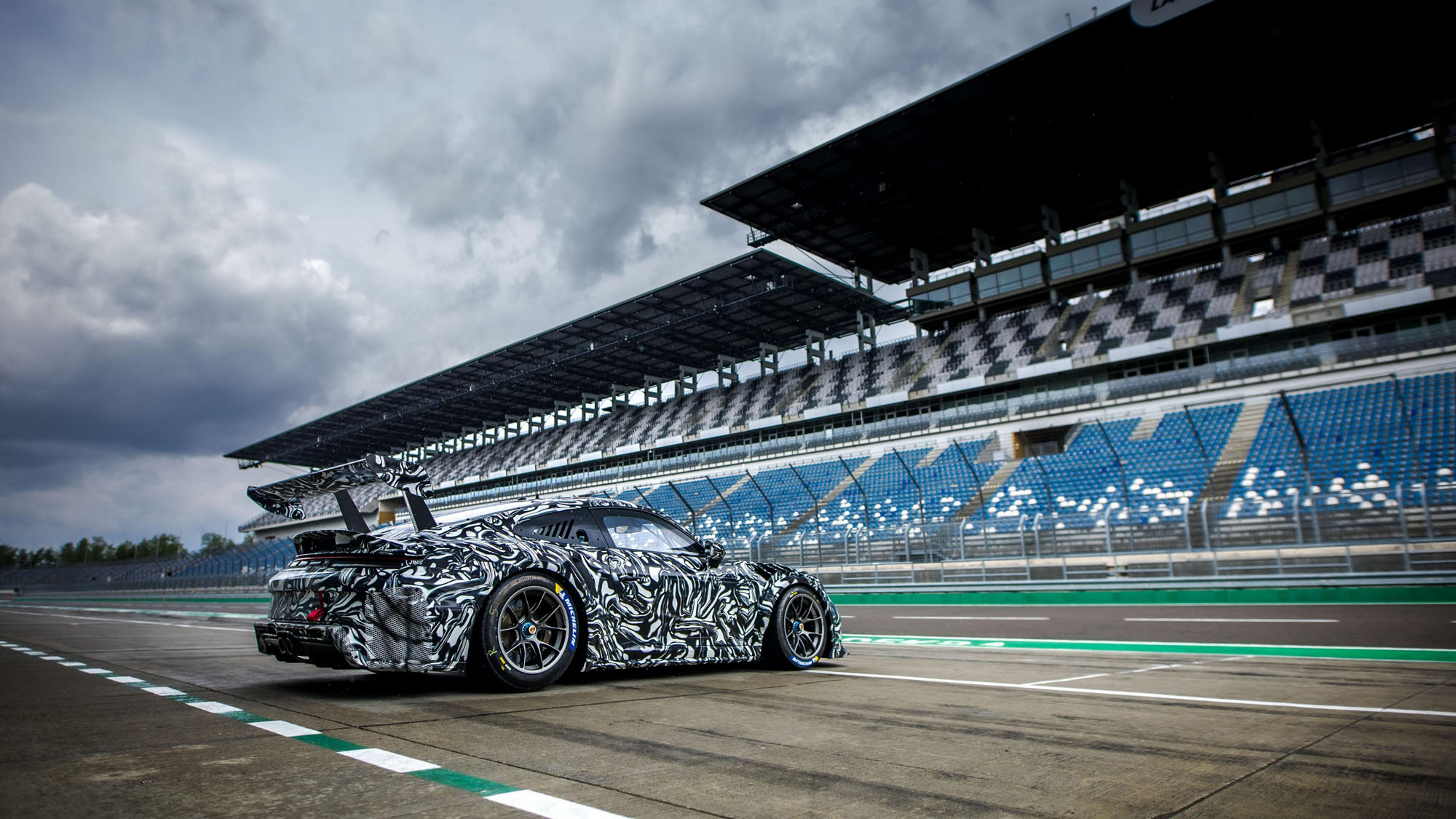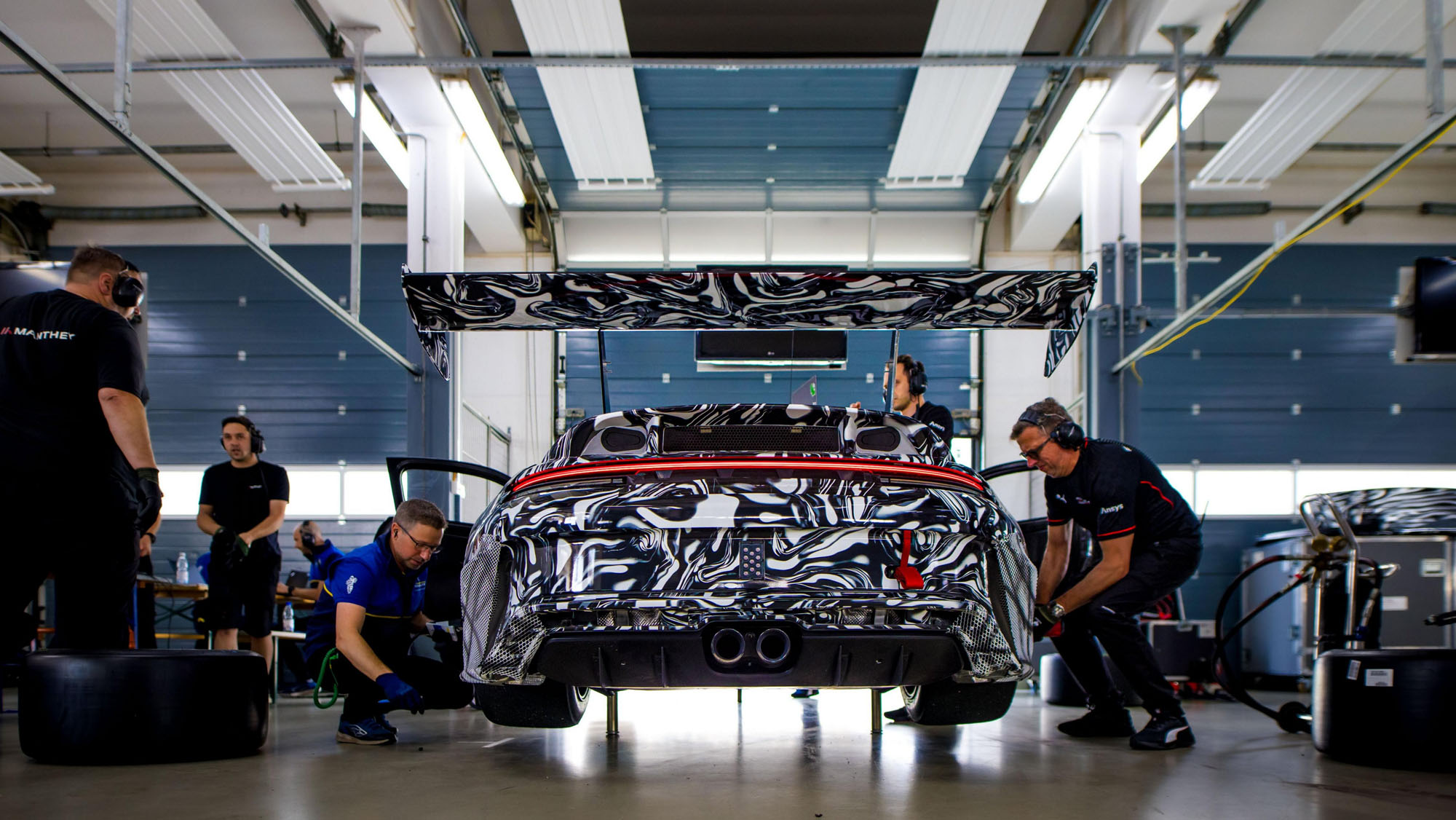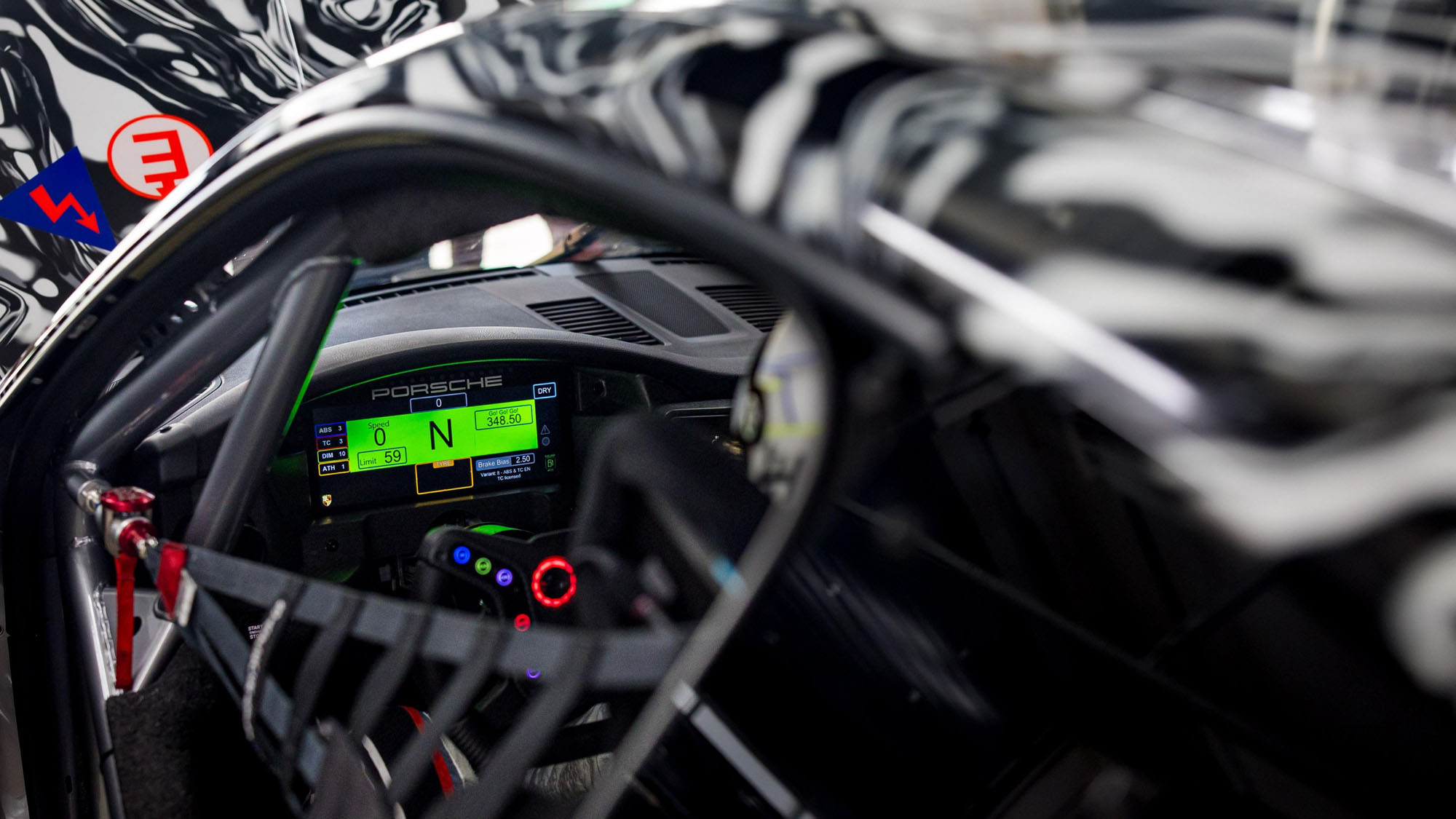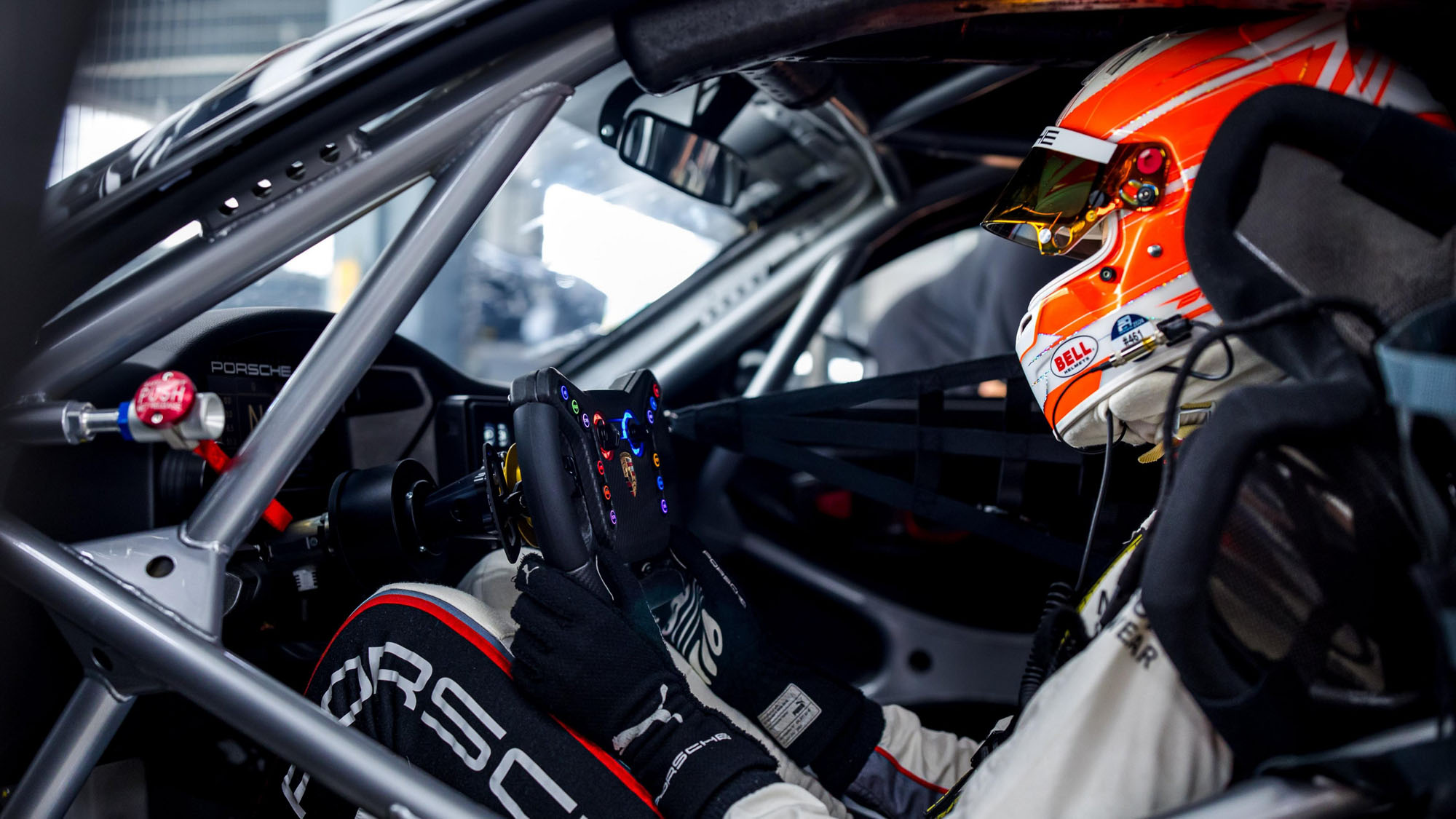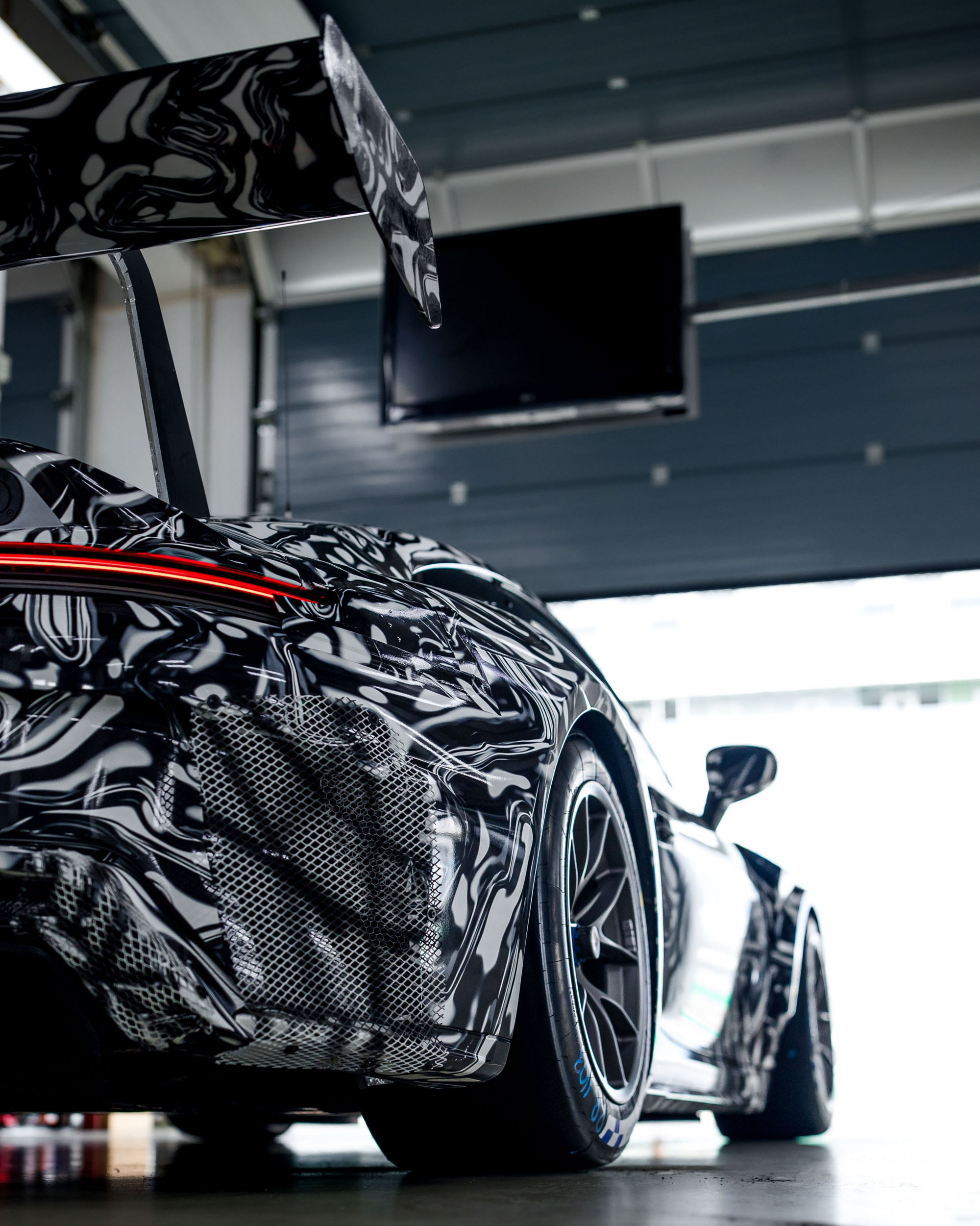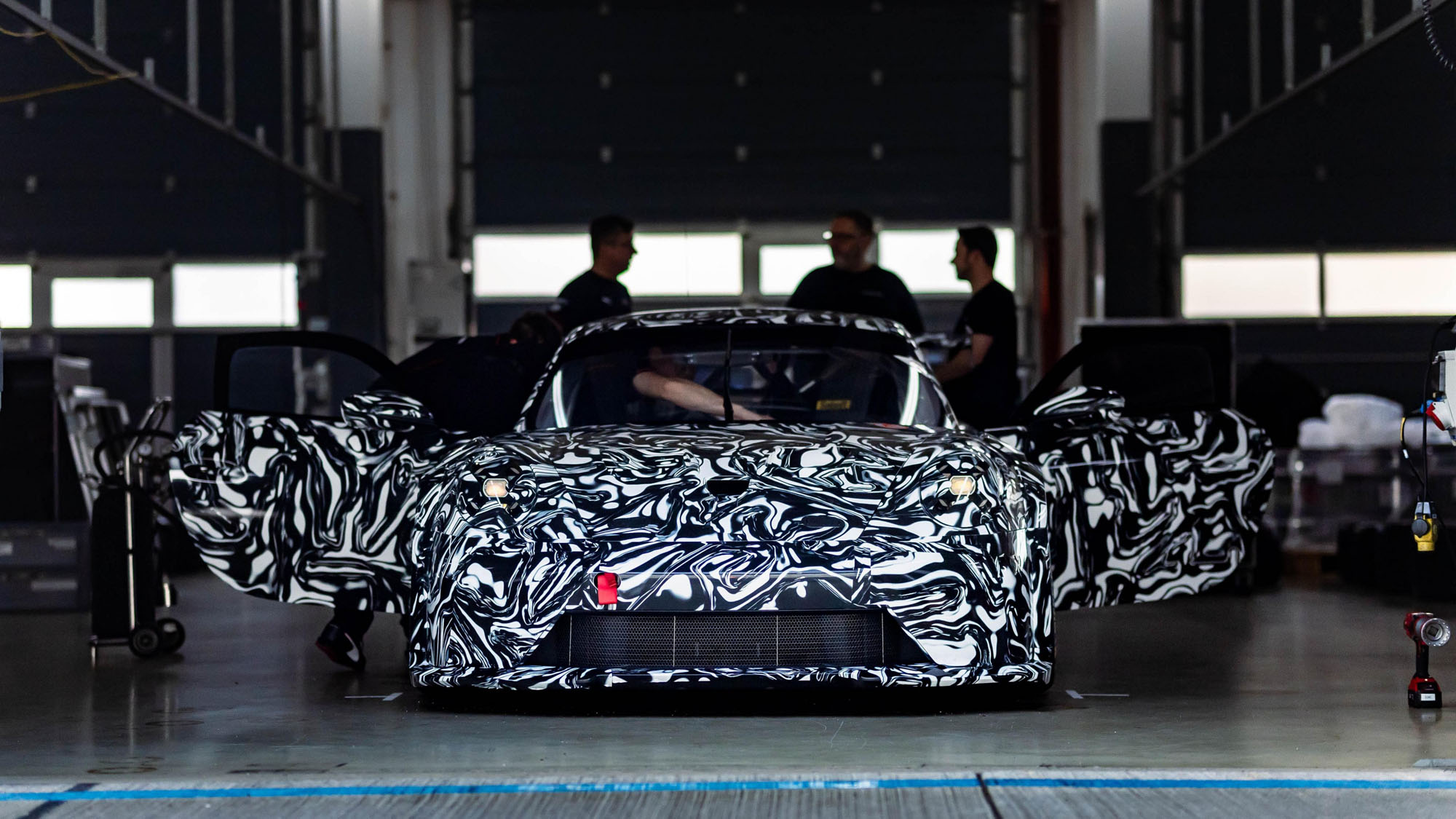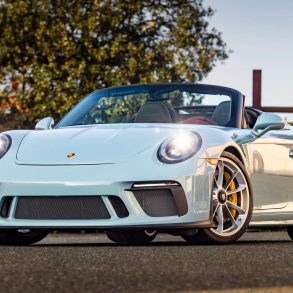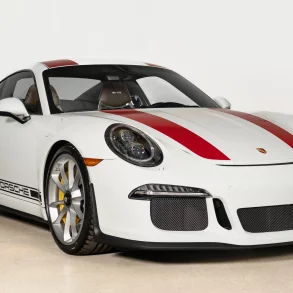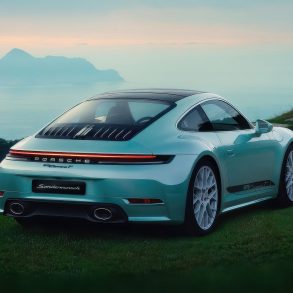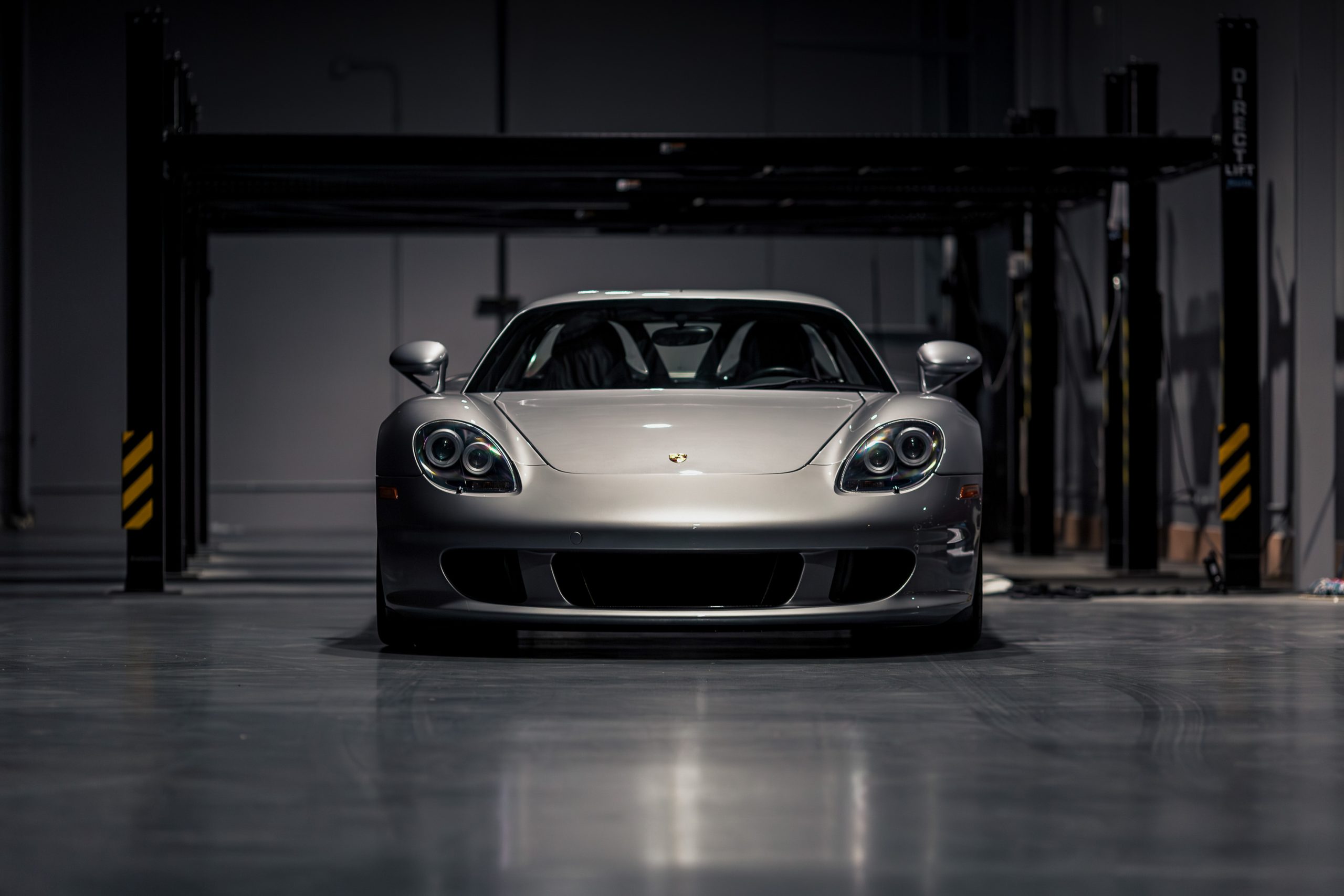The new Porsche 911 Cup will make its world debut this summer. The comprehensively optimized one-make cup race car based on the current 992.2 generation of the 911 has already largely completed its development phase. The 911 Cup will be used in the Porsche Mobil 1 Supercup and in selected Carrera Cup series, including Porsche Carrera Cup North America, from the start of the 2026 season.
911 Cup at a Glance
- After 5,381 one-make cup race cars based on the 911, the following model takes over
- Development began in January 2024, and production set to start in fall 2025
- Test drives exclusively with eFuel blend from the Porsche Mobil 1 Supercup
- The new 911 Cup will also be manufactured at the main plant in Zuffenhausen
Backstory
Since 1990, the Porsche 911 has served as the basis for the sports car manufacturer’s one-make cup racing series. What began with the German Porsche Carrera Cup in 1990 and expanded three years later to include the Porsche Supercup as part of selected Formula 1 Grand Prix races has since evolved into a global success story.
In the current season, Carrera Cup competitions are taking place in more than 12 countries around the world, spanning from Japan and Asia to Australia and the Middle East, as well as North and South America and Europe. Additionally, there are 23 Porsche-sanctioned Sprint and Endurance Challenges and Trophies, which also utilize the 911 GT3 Cup for their races. This is also reflected in the production figures: with 5,381 units now built, the 911-based one-make cup cars are among the most produced racing cars in the world.
The Cup cars are produced side by side with 911 series models at the main plant in Stuttgart-Zuffenhausen. The current model, which debuted in the 2021 season, alone has been produced 1,130 times. Production of a Type 992.1 Porsche 911 GT3 Cup took just under eight hours.
Dynamic development phase on three demanding racetracks
Work on the new competition vehicle began at Porsche Motorsport in Weissach in January 2024. Like its predecessors, the 911 Cup once again combines series production technology with high-caliber motorsport attributes, transforming it more than ever into a thoroughbred racing car. Among other things, development focused on improving the aerodynamics of the front end, which improves drivability. In addition, there are numerous improvements to vehicle electronics, brakes, the transmission and the six-cylinder boxer engine, as well as vehicle handling. ‟We are already operating at a very high-performance level with the current GT3 Cup,” Jan Feldmann, Project Manager for GT racing cars at Porsche Motorsport said. ‟This has allowed us to focus more on feedback from the global one-make cups and develop a racing car that has been refined in many areas compared to the current Cup 911.”
Real-world test drives took place on the Italian Grand Prix circuit in Monza, at the Lausitzring in Brandenburg and on the in-house track at the Weissach development center. Two former Porsche Juniors took turns at the wheel: Bastian Buus from Denmark, Porsche Mobil 1 Supercup champion in 2023, and Klaus Bachler. The Austrian won the FIA Endurance Trophy for LMGT3 drivers in 2024, among other things. Laurin Heinrich, 2024 IMSA champion in the GTD Pro class, and Marco Seefried, a very experienced racer, also spent time driving the prototypes.
Test program exclusively with eFuel blend from Porsche Supercup
The eFuel blend used in the 2025 Porsche Mobil 1 Supercup (PMSC) technically meets the new Fédération Internationale de l’Automobile (FIA) Appendix J requirements for renewable (‟Advanced Sustainable”) fuel, and with all combined CO₂ reduction measures,* corresponds to a total CO₂ equivalent reduction of 66 percent compared to a fossil fuel equivalent. The proportion of renewable components in this performance-specialized racing fuel blend is 79.7 percent by volume. Renewable synthetic raw gasoline, known as MtG (methanol-to-gasoline), makes up the largest proportion of the mix.
Other blending components include renewable, waste-based or residual-based ethanol, which is used to increase the oxygen content in the fuel and the octane rating, among other things. The octane rating is 100.5 RON. The racing fuel blend was developed specifically for the boxer engines used in motorsport and combines high performance with the highest possible proportion of renewable blending components.
Above content © 2025 Dr. Ing. h.c. F. Porsche AG reviewed and edited by Rex McAfee



